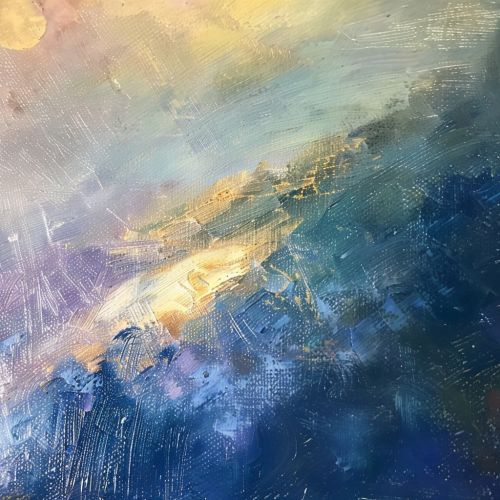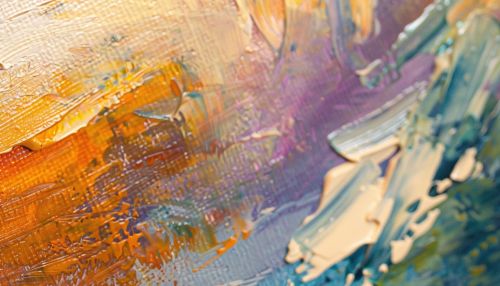Glazing (painting)
Introduction
Glazing in the context of painting refers to a technique used by artists to apply a thin, semi-transparent layer of paint, known as a glaze, over an already dry layer of paint. The technique is primarily used to modify the color and tone of the underlying paint layer, and to achieve a depth and luminosity in the painting that is not possible with a single layer of opaque paint.


History
The technique of glazing has been used by artists for centuries, dating back to the Renaissance period. It was during this time that artists began to experiment with the use of oil paints, which allowed for a greater range of effects and techniques, including glazing. The technique was further developed and refined during the Baroque period, and has been used by artists ever since.
Technique
The process of glazing involves applying a thin, transparent or semi-transparent layer of paint over a dry layer of paint. The glaze is typically made from a transparent pigment mixed with a medium, such as linseed oil or acrylic medium. The glaze is then applied to the painting using a brush, and is often built up in multiple layers to achieve the desired effect.
The use of glazing in painting allows artists to achieve a depth and luminosity in their work that is not possible with a single layer of opaque paint. The transparent nature of the glaze allows the color and tone of the underlying paint layer to show through, creating a rich, complex color that can be subtly modified and controlled by the artist.
Materials
The materials used in glazing can vary depending on the medium of the painting. For oil paintings, the glaze is typically made from a transparent oil paint mixed with a medium such as linseed oil. The medium serves to thin the paint and increase its transparency, as well as to slow the drying time, allowing the artist more time to work with the glaze.
For acrylic paintings, the glaze is typically made from a transparent acrylic paint mixed with an acrylic medium. The medium serves a similar purpose as in oil painting, thinning the paint and increasing its transparency. However, acrylic mediums also have the added benefit of improving the durability and flexibility of the paint, making it less prone to cracking over time.
Applications
The technique of glazing is used in a variety of artistic applications. In fine art painting, it is often used to create depth and luminosity, as well as to modify the color and tone of the underlying paint layer. It can also be used to create a variety of effects, such as the illusion of depth and volume, the softening of edges, and the creation of a smooth, polished finish.
In addition to fine art painting, glazing is also used in other forms of art, such as ceramics and glasswork. In these applications, the glaze serves a similar purpose, modifying the color and texture of the underlying material and adding depth and luminosity.
Conclusion
Glazing is a versatile and powerful technique that has been used by artists for centuries to achieve a range of effects. Whether used in oil painting, acrylic painting, ceramics, or glasswork, the technique allows artists to subtly modify the color and tone of their work, create depth and volume, and achieve a luminosity and depth that is not possible with a single layer of opaque paint.
